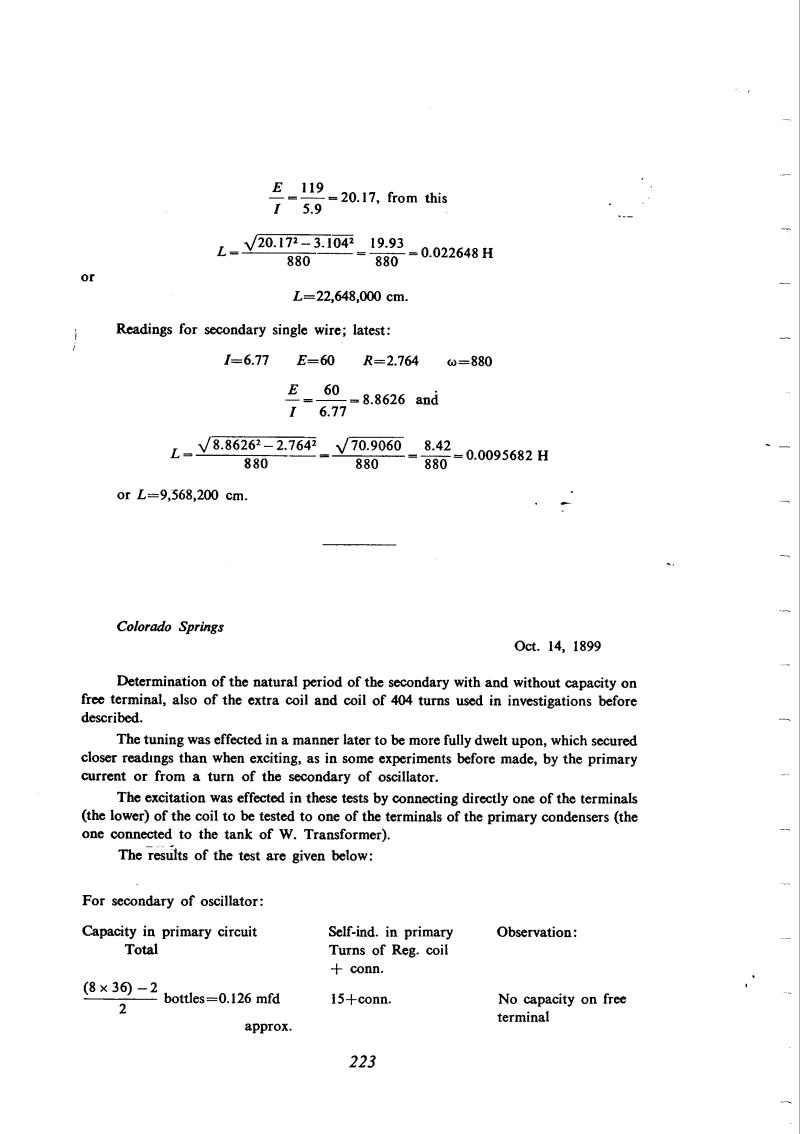
Nikola Tesla Books
$! {E \over I} $! = $! {119 \over 5.9} $! = 20.17, from this
L = $! {\sqrt{{20.17^{2}} - {3.104^{2}}} \over 880} $! = $! {19.93 \over 880} $! = 0.022648 H
or
L = 22,648,000 cm.
Readings for secondary single wire; latest:
I = 6.77 E = 60 R = 2.764 Ï = 880
$! {{E \over I} = {60 \over 6.77} = 8.8626} $! and
$! {L = {\sqrt{8.8626^{2} - 2.764^{2}} \over 880} = {\sqrt{70.9060} \over 880} = {8.42 \over 880} =} $! 0.0095682 H
or L = 9,568,200 cm.
Colorado Springs
Oct. 14, 1899
Determination of the natural period of the secondary with and without capacity on free terminal, also of the extra coil and coil of 404 turns used in investigations before described.
The tuning was effected in a manner later to be more fully dwelt upon, which secured closer readings than when exciting, as in some experiments before made, by the primary current or from a turn of the secondary of oscillator.
The excitation was effected in these tests by connecting directly one of the terminals (the lower) of the coil to be tested to one of the terminals of the primary condensers (the one connected to the tank of W. Transformer).
The results of the test are given below:
For secondary of oscillator:
| Capacity in primary circuit Total | Self-ind. in primary Turns of Reg. coil + conn. | Observation: |
|---|---|---|
| $! {{(8 \times 36) - 2} \over 2} $! bottles = 0.126 mfd approx. | 15 + conn. | No capacity on free terminal |
223
October 14
He continues with coil testing with parameters he measured during two previous days as well. He performs measurements at high frequencies and he intentionally loosely couples the measurements circuits with the exciting circuit (oscillator primary). The goal is to find the circuit resonant frequencies with the three mentioned coils at various capacitive loadings.

